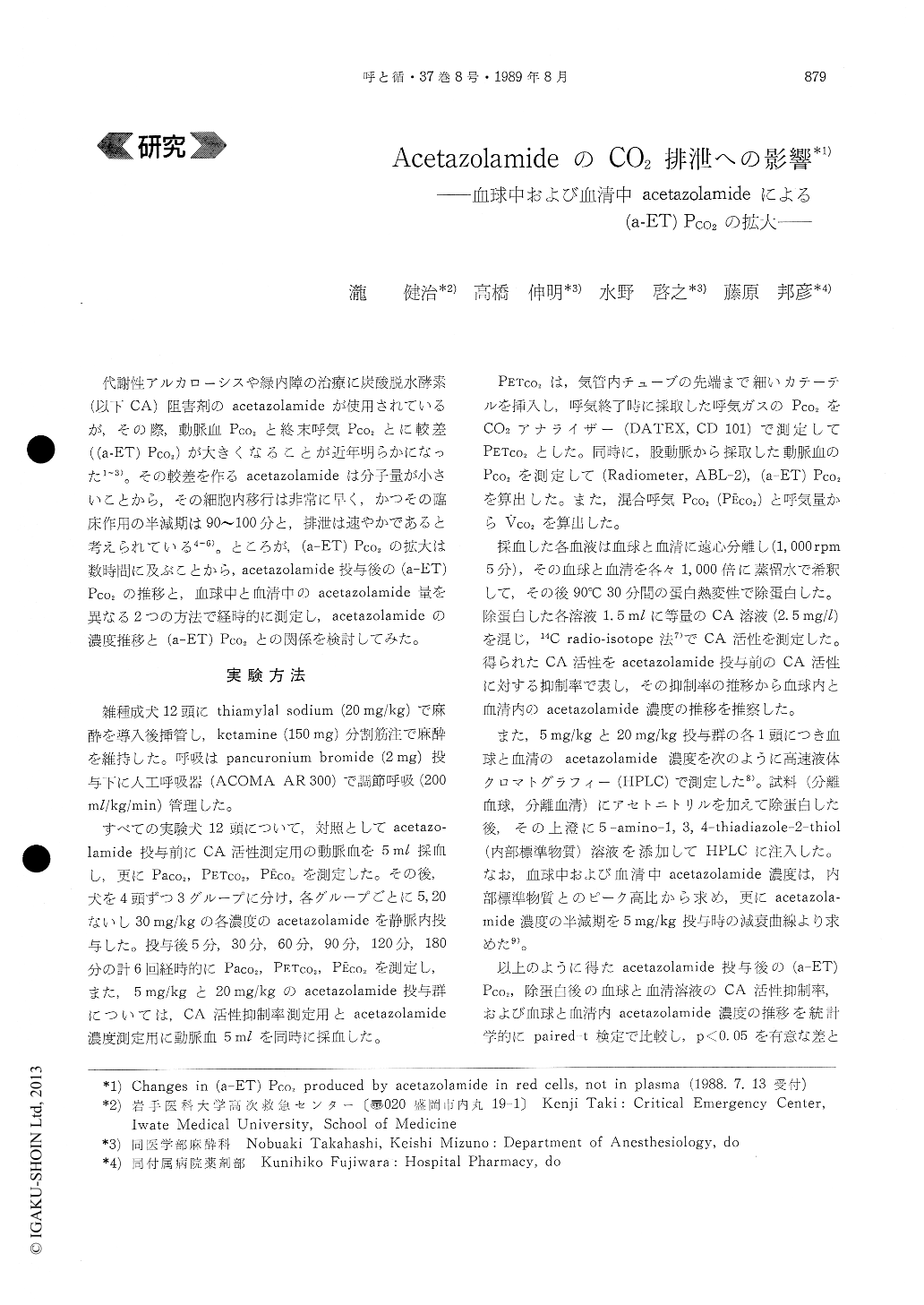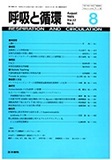Japanese
English
- 有料閲覧
- Abstract 文献概要
- 1ページ目 Look Inside
代謝性アルカローシスや緑内障の治療に炭酸脱水酵素(以下CA)阻害剤のacetazolamideが使用されているが,その際,動脈血Pco2と終末呼気PCO2とに較差((a-ET)PCO2)が大きくなることが近年明らかになった1〜3)。その較差を作るacetazolamideは分子量が小さいことから,その細胞内移行は非常に早く,かつその臨床作用の半減期は90〜100分と,排泄は速やかであると考えられている4〜6)。ところが,(a-ET)PCO2の拡大は数時間に及ぶことから,acetazolamide投与後の(a-ET)PCO2の推移と,血球中と血清中のacetazolamide量を異なる2つの方法で経時的に測定し,acetazolamideの濃度推移と(a-ET) PCO2との関係を検討してみた。
The changes in (a-ET) PCO2, concentration of acetazolamide and inhibition rate of carbonic anhy-rase in blood were measured for 3 hours after administration of acetazolamide to anesthetized dogs, in order to find whether the changes in (a-ET) PCO2 was in response to the concentration of acetazolamide in red cells or plasma.
1. The increase in (a-ET) PCO2 was stable for 3 hours after administration of acetazolamide 30 mg/kg).
2. According to the concentration of acetazolamide measured by HPLC, the concentration in erythrocytes increased quickly but decreased more slowly than in plasma. The concentration of acetazolamide in erythrocytes became higher than in plasma after 3 hours.
3. The change in the inhibition rate of CA activity in red cells and in plasma paralleled to the concentration of acetazolamide in red cells and in plasma.
4. (a-ET) Pco2 levels could be raised by low CA activity inhibited by acetazolamide in red cells, not in plasma.
5. Remaining in higher concentration of acetazolamide in erythrocytes might be occured by the reason that acetazolamide combines with protein, especially CA, in erthrocytes to be unable to pass through the erythrocytes membrane smoothly.

Copyright © 1989, Igaku-Shoin Ltd. All rights reserved.


